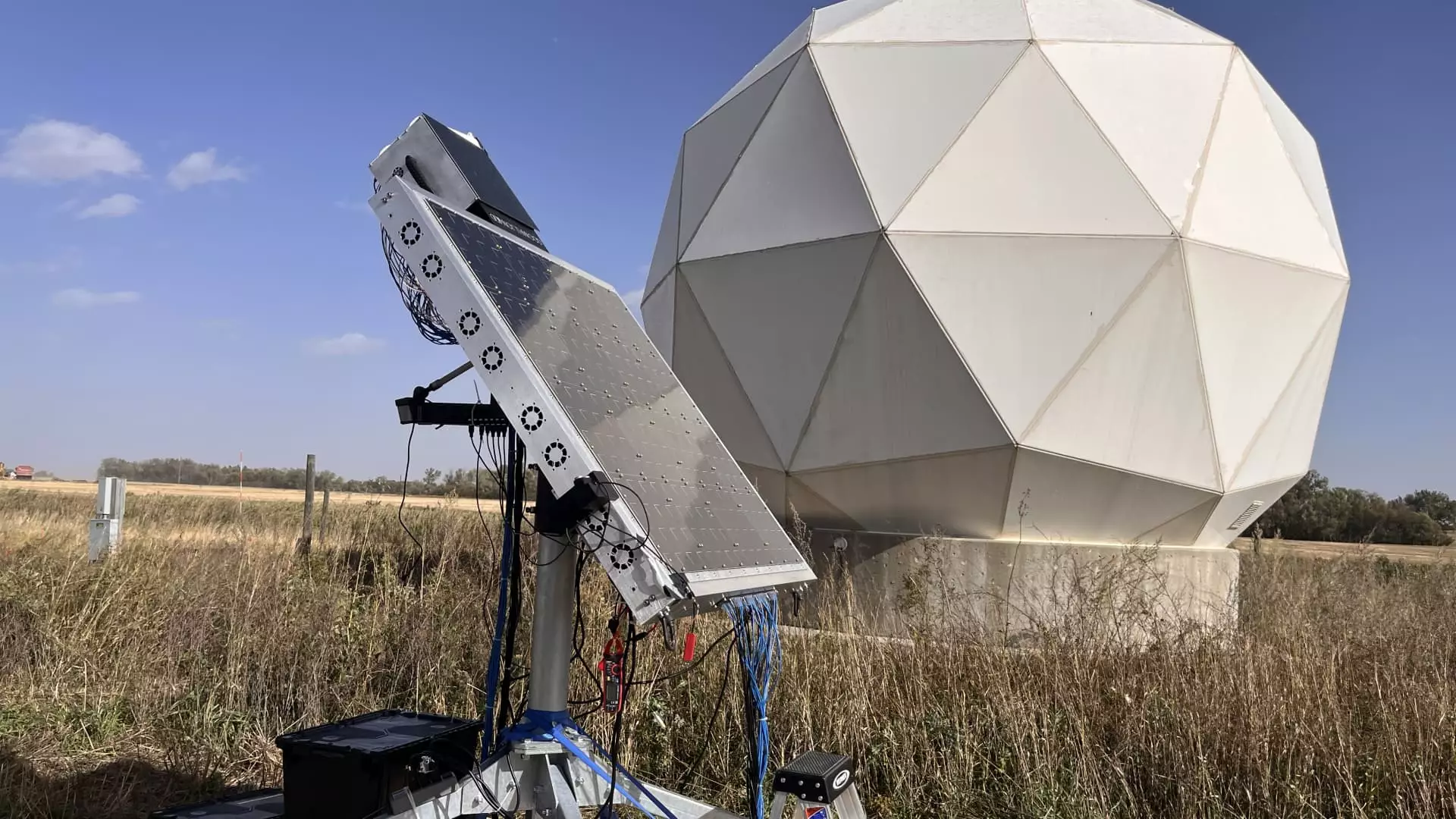In recent months, Northwood Space has emerged as a prominent player in the rapidly evolving field of space connectivity, spearheaded by former television personality and musician Bridgit Mendler. This ambitious startup has successfully passed a significant technical milestone by establishing communication with Planet Labs’ sophisticated imagery satellites in orbit. The achievement marks a pivotal moment for Northwood as it aims to reshape how ground stations interact with satellite networks, fundamentally altering the tapestry of space technology.
Ground stations serve as the crucial connective tissue of satellite operations, acting as the link that facilitates data transmission between Earth and various satellites orbiting above. As the demand for comprehensive and reliable satellite communication continues to surge, the development of innovative ground stations has never been more critical. Northwood is addressing this need with its unique phased array technology, designed to enhance the performance and efficiency of ground-based communication systems.
Mendler is confident in Northwood’s vision to transform the ground station model, stating that their system, dubbed Portal, could manage to connect with up to ten satellites simultaneously, dwarfing the capabilities of traditional parabolic dish antennas that typically support only one to three connections at a time. This proposed leap in capability represents a significant stride toward meeting the growing demands of satellite communications, especially in an age where timely data access can influence myriad sectors from environmental monitoring to disaster response.
As Northwood delves deeper into the burgeoning ground station as a service (GSaaS) market, competition is heating up. Industry giants like Amazon have already launched their own ground station services, indicating robust interest and investment in this space. However, Northwood’s approach diverges from more conventional models by aiming to eliminate outdated connectivity practices plagued by inefficiencies, blackouts, and exorbitant costs. Mendler draws parallels with the cellular industry, suggesting that Northwood’s shared ground station model could usher in operational efficiencies akin to those experienced in mobile telecommunications.
The startup’s vision positions it as a potential leader in a sector that might redefine how companies engage with satellite technology. Mendler has articulated a clear objective: to create a new standard for connectivity that could mitigate historical challenges in the satellite communication landscape.
Last week, the Northwood team undertook a critical test of their cutting-edge technology in Maddock, North Dakota, with a prototype antenna affectionately named Frankie. The test was a telemetry, tracking, and control (TT&C) operation, aiming to connect with Planet’s operational satellites via both S-band and X-band frequencies. Remarkably, the team accomplished bi-directional communication throughout the satellite pass, a feat that Mendler described as integral to their ambitions.
Frankie, designed and assembled within just four months, represents Northwood’s commitment to rapid prototyping and agile development practices. From setup to live testing in a mere six hours underscores the company’s dedication to operational efficiency—a promise of what is to come as they prepare to deploy additional sites capable of supporting multiple concurrent satellite connections, with anticipated data rates exceeding one gigabit per second.
Planet Labs heralded this milestone as significant, with Joseph Breu, a senior director for the company, emphasizing that Northwood addresses historical cost and scalability issues while also setting new benchmarks in antenna development timelines.
As Northwood ambitiously charts its course forward, the startup is scouting potential locations in the U.S., Europe, Australia, and New Zealand to establish its first series of Portal ground stations. With a dual-antenna design that includes a larger S-band frequency unit and a more compact X-band antenna, Northwood is poised to address a range of operational and technical needs across diverse market sectors.
Mendler’s assertive approach signals a transformative chapter in space connectivity, positioning Northwood not only as a competitor but also as a catalyst for innovation within the industry. With a clear focus on enhancing performance metrics, expanding capabilities, and ultimately reshaping how satellite communications function, the future of Northwood Space seems bright.
Northwood Space’s robust advancements paint an optimistic picture for the future of satellite communication. The company’s initiatives not only promise to boost operational efficiencies but also lay the groundwork for a new paradigm within the space tech sector. If Northwood successfully navigates the challenges ahead, it may very well redefine how we connect with the cosmos, setting a new standard for the capabilities and accessibility of satellite communications as we know them.

